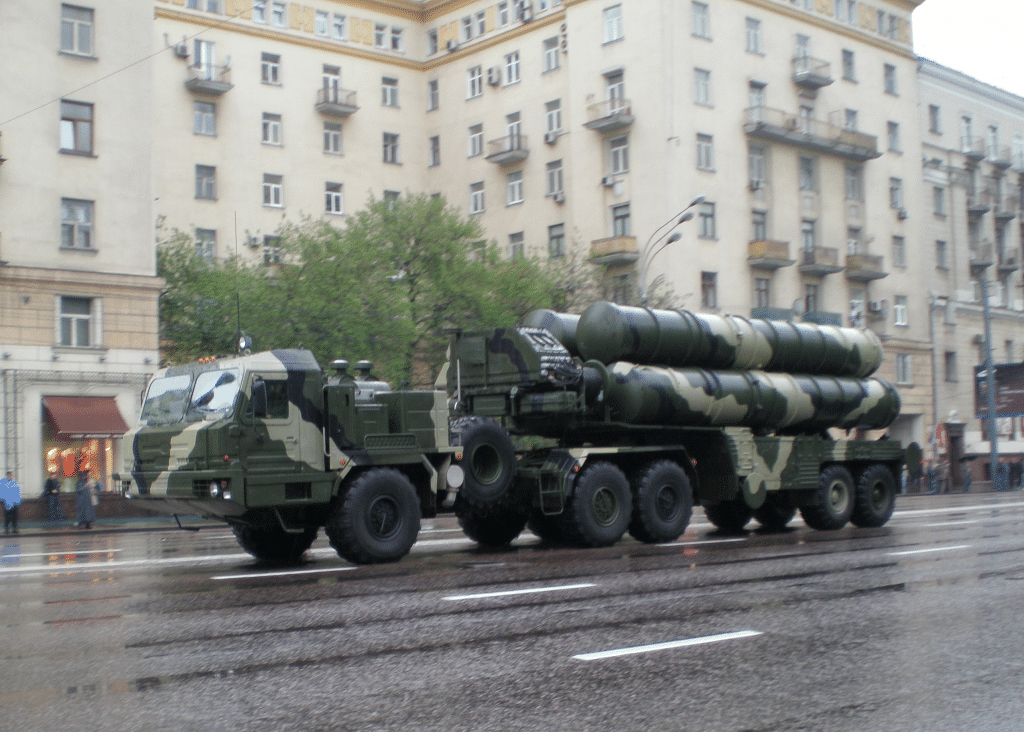Every system has shortcomings and so does the Russian S-400. ThePrint analyses some of the claims.
New Delhi: The India-Russia S-400 surface-to-air missile systems deal is expected to bring much-needed safety to India’s skies by defending the cities from multiple targets and guarding critical national assets.
The armed forces and military experts consider the S-400 a gamechanger and are eager to see their arrival and deployment on Indian soil at the earliest.
However, in this moment of jubilation, it is important to know and understand that every system has shortcomings and so does the S-400.
Also Read: India’s S-400 advantage: IAF in Delhi can shoot down Pakistani missile near Amritsar
ThePrint analyses some of the claims that have been made about India’s latest military acquisition:
Five Minutes Emplacement Time
The five minutes deployment time is generally valid in areas like the plains of Punjab or the deserts of Rajasthan.
However, when it comes to deployment in mountainous regions or jungle terrain, the 96L6 and 92N6 radars of S-400 systems need to be raised higher than the surroundings to increase the field of view. The field of view of this radar plays an extremely important role in engaging targets.
This increase in field of view is achieved by using the 40V6 mast assembly which supports the S-400 system. But it involves removing the 92N6 radar from mobile vehicle MZKT-7930 chassis and placing it on the 40V6 mast.
The entire process takes about 45 to 90 minutes. Hence, the five minutes deployment time has to be read with the fine print in a country such as India with varied terrain features.
Effective Range
The S-400 system offered for export by Russia has a 48N6E3 missile which is the export version of 48N6DM missile. The range of 48N6E3 missile is 3-240 km and not 400 km as widely reported.
The 40N6 missiles which have the 400 km range are not yet known to be operational even in Russia.
The 9M96 missile is offered by Russia for export with S-300PMU2 systems but no country has shown any interest in it so far. These are also unlikely to be deployed with S-400 systems in Russia but with their future S-350 SAMs.
So, the range the Indian S-400 systems are likely to get is possibly only 240 km.
Effective Altitude and Anti-Ballistic Missile (ABM) Capability
The 48N6E3 missile, offered by Russia for export models of S-400 systems, uses a 180 kg directional warhead which is effective from 10 m to 27 km altitude.
Although a directional warhead increases ATBM (anti-tactical ballistic missile) effectiveness, most ballistic missiles move at much higher altitudes than S-400’s 27 km.
This means they will be intercepted only in the terminal phase, depending upon speed of the incoming missile.
Successfully Block Even Hypersonic Weapons
Hypersonic weapons under trial in the US generally achieve a speed of Mach 5+ at an altitude of between 50 km and 60 km.
Also Read: 3 ways India can escape Trump sanctions for Russia S-400 missile deal.
Chinese hypersonic weapons, especially the Dongfeng (East Wind) DF-ZF or DF-17, are known to be moving at an altitude of 80-90 km to achieve speeds of above Mach 10+.
The 48N6E3 missile can neither reach such altitudes nor the speeds of hypersonic missiles.
Thus, even if an S-400 system located near the border detects an incoming hypersonic weapon aimed at Delhi or Mumbai, it will not be able to intercept owing to speed and altitude limitations.
Effective Against Pakistan Missiles
Most reports say that the S-400 system can stop 36 nuclear ballistic missiles aimed at India simultaneously.
The command system of S-400 is capable of tracking up to 100 targets and controlling 6 batteries up to a distance of 40 km.
However, the engagement radar 92N6 with latest digital technologies and new processors can control only up to 12 missiles aimed at 6 targets.
The flight time for ballistic missiles (BMs) between the US and Russia is about 30 minutes whereas the flight time between India and Pakistan is barely 5 minutes.
Despite all these shortcomings, assuming that the S-400 system intercepts the nuclear missile, it could still be dangerous if the nuclear fallout is over populated areas of India.
Also Read: Indian Air Force wants to buy second lot of S-400 missile systems from Russia
